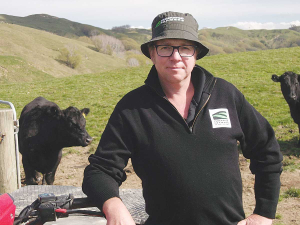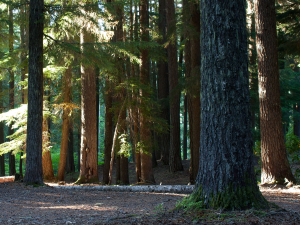A horror story - that’s how Federated Farmers describes new research looking at forestry conversions’ impact on water quality.
The Our Land and Water National Science Challenge (OLW) white paper ‘Why Pines?’ sought to summarise the results of four recently completed research programmes that investigated how land use changes might change in the future to meet New Zealand’s environmental goals.
The four research programmes all found a likely increase in pine plantations on land currently used for sheep and beef farming.
Federated Farmers meat & wool chair Toby Williams says the report reads like “a horror story for New Zealand’s farmers and rural communities”.
“The study makes it very clear that under current policy settings we will continue to see millions of hectares of productive farmland plastered in plantation pine trees,” he says.
Williams says the report, which found that one fifth of sheep and beef country would need to be converted to pine forest to meet freshwater goals, must be of concern to the Government.
He adds that the current Government scrapped the He Waka Eke Noa (HWEN) pricing programme because it would have that same effect.
“If the Government wants farmers to increase the value of our exports and adapt to changing conditions, we need to be able to change our land use as opportunities pop up,” he concludes.
Three factors influence the research findings: real and true physical and economic reasons; constraints and choices related to modelling the future; and the current policy settings and incentives included in the modelling.
The report forecasts flow-on impacts for rural communities, including decreased employment, a “hollowing out” of smaller rural communities and a consequent reduction in the health and wellbeing of those left behind.
It also notes implications for food security and food access.
“After the experience of Covid-19 and worldwide supply disruptions, people are more aware of the importance of having and maintaining secure access to locally grown food,” the report states.
“Incentives or subsidies may be needed to promote locally grown food and maintain some level of production capabilities, particularly for those commodities that are not economically profitable at farm scale.”
Dr Jenny Webster- Brown, co-author of the report, says the results raise “significant concerns” but do not predict an unavoidable future.
“The results are surprisingly consistent and show what could happen if current policies and economic signals do not change to accommodate different ways of thinking about our land use,” says Webster-Brown.
She says there is now a clear section of travel, unless government and the agriculture sector act.
“It is not going to be easy, but there is still time to redirect our system to a pathway that better reflects the aspirations of our farmers and all New Zealanders,” she adds.
New Zealand Forest Owners Association NZFOA chief executive, Dr Elizabeth Heeg, says that while the sector welcomes the science and modelling behind the report, a more critical examination of land use evidence is required.
“The recommendations lack scientific evidence, and the narrative fails to frame forestry as an important land use,” Heeg says.
She says the white paper’s findings mirror previous research that looks at water quality in pine forests.
“Paradoxically, that evidence doesn’t seem to be the outcome OLW were looking for, with the authors raising more concern over forestry’s water quality than other land uses detailed in the report,” Heeg says.
“It is disappointing to see the results interpreted in such a dramatic way when pine is evidently a tool New Zealand can use in its policies and practices tool kit,” she says.
Heeg says the reports emphasis on forestry’s expansion doesn’t mean other land uses won’t be accommodated.



















